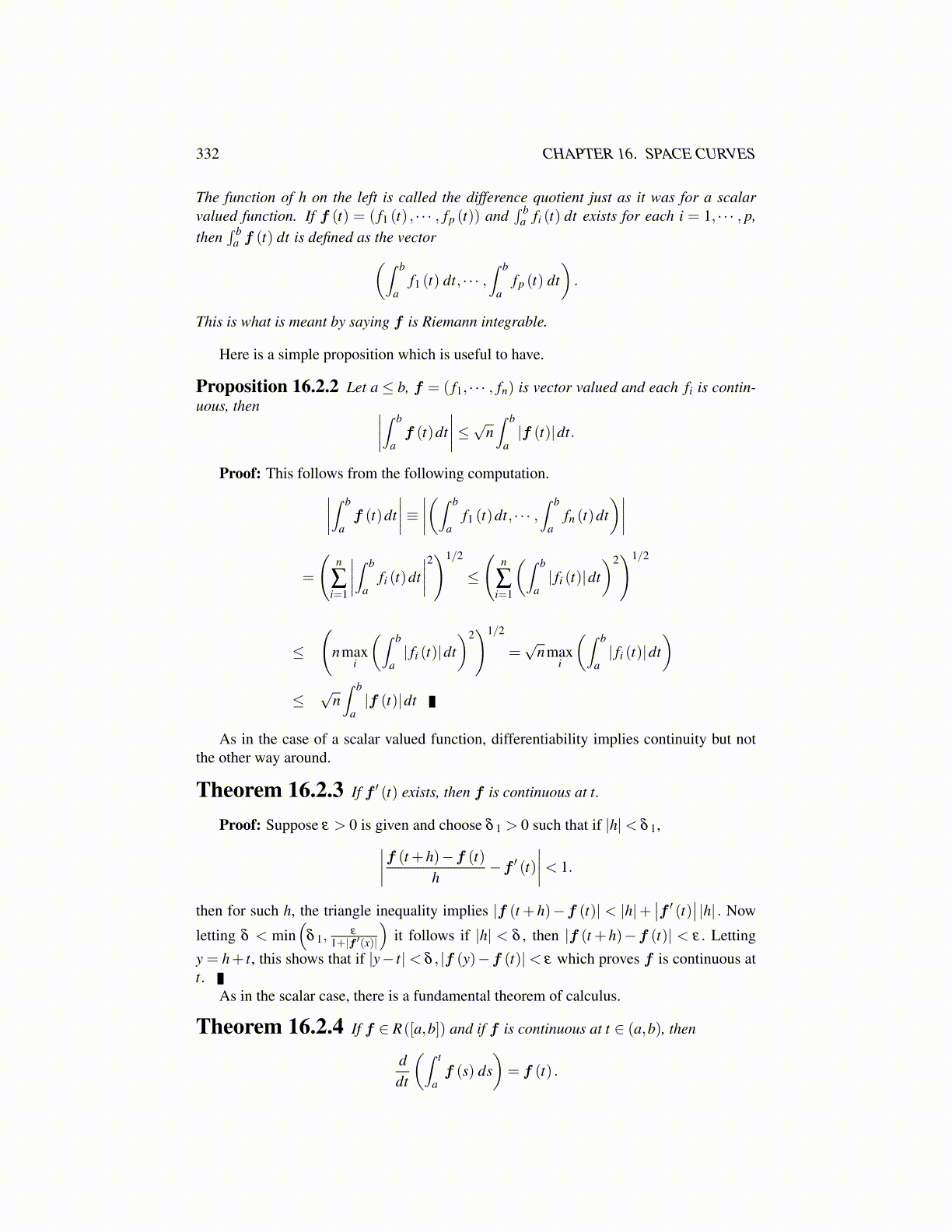
332 CHAPTER 16. SPACE CURVES
The function of h on the left is called the difference quotient just as it was for a scalarvalued function. If f (t) = ( f1 (t) , · · · , fp (t)) and
∫ ba fi (t) dt exists for each i = 1, · · · , p,
then∫ b
a f (t) dt is defined as the vector(∫ b
af1 (t) dt, · · · ,
∫ b
afp (t) dt
).
This is what is meant by saying f is Riemann integrable.
Here is a simple proposition which is useful to have.
Proposition 16.2.2 Let a ≤ b, f = ( f1, · · · , fn) is vector valued and each fi is contin-uous, then ∣∣∣∣∫ b
af (t)dt
∣∣∣∣≤√n∫ b
a|f (t)|dt.
Proof: This follows from the following computation.∣∣∣∣∫ b
af (t)dt
∣∣∣∣≡ ∣∣∣∣(∫ b
af1 (t)dt, · · · ,
∫ b
afn (t)dt
)∣∣∣∣=
(n
∑i=1
∣∣∣∣∫ b
afi (t)dt
∣∣∣∣2)1/2
≤
(n
∑i=1
(∫ b
a| fi (t)|dt
)2)1/2
≤
(nmax
i
(∫ b
a| fi (t)|dt
)2)1/2
=√
nmaxi
(∫ b
a| fi (t)|dt
)≤
√n∫ b
a|f (t)|dt
As in the case of a scalar valued function, differentiability implies continuity but notthe other way around.
Theorem 16.2.3 If f ′ (t) exists, then f is continuous at t.
Proof: Suppose ε > 0 is given and choose δ 1 > 0 such that if |h|< δ 1,∣∣∣∣f (t +h)−f (t)h
−f ′ (t)∣∣∣∣< 1.
then for such h, the triangle inequality implies |f (t +h)−f (t)| < |h|+∣∣f ′ (t)
∣∣ |h| . Now
letting δ < min(
δ 1,ε
1+|f ′(x)|
)it follows if |h| < δ , then |f (t +h)−f (t)| < ε. Letting
y = h+ t, this shows that if |y− t|< δ , |f (y)−f (t)|< ε which proves f is continuous att.
As in the scalar case, there is a fundamental theorem of calculus.
Theorem 16.2.4 If f ∈ R([a,b]) and if f is continuous at t ∈ (a,b), then
ddt
(∫ t
af (s) ds
)= f (t) .